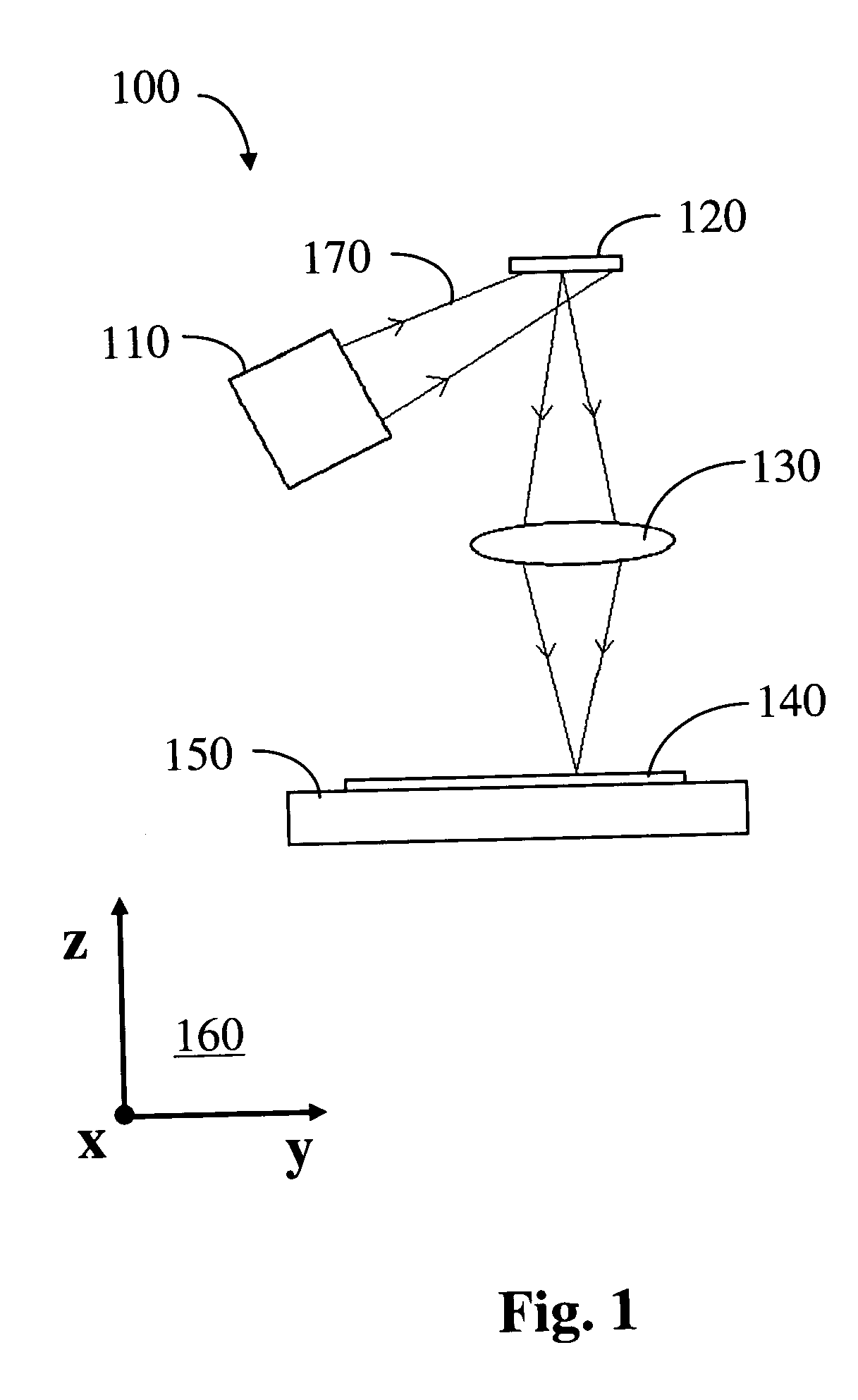Continuous direct-write optical lithography
a direct-write, optical lithography technology, applied in the field of optical lithography, can solve the problems of prohibitive chip production, and high cost of reticles, and achieve the effect of reducing the cost of substrate exposure and more efficient exposur
- Summary
- Abstract
- Description
- Claims
- Application Information
AI Technical Summary
Benefits of technology
Problems solved by technology
Method used
Image
Examples
Embodiment Construction
[0047]With reference to FIG. 1, optical lithography tool 100, which is an embodiment of the invention suitable for patterning a substrate 140 mounted on a movable stage 150, is shown with a light source 110, a spatial light modulator (SLM) 120 and imaging optics 130. Coordinate axes 160 are shown with the z and y axes in the plane of the figure and the x axis perpendicular to the plane of the figure. The light path through the optical lithography tool is represented by rays 170. The light source 110 continuously illuminates the SLM 120. The light source may comprise an arc lamp, continuous laser (solid state or gas), light emitting diode (LED) or other type of continuous light source that has suitable spectral properties for exposure of the substrate 140. Furthermore, a light source such as a quasi-continuous laser (a laser which is pulsed at MHz frequencies), may be suitable as a light source for this invention—a critical criteria is that the pulsing frequency be much higher than t...
PUM
| Property | Measurement | Unit |
|---|---|---|
| switching frequency | aaaaa | aaaaa |
| cycle time | aaaaa | aaaaa |
| speed | aaaaa | aaaaa |
Abstract
Description
Claims
Application Information
 Login to View More
Login to View More - R&D
- Intellectual Property
- Life Sciences
- Materials
- Tech Scout
- Unparalleled Data Quality
- Higher Quality Content
- 60% Fewer Hallucinations
Browse by: Latest US Patents, China's latest patents, Technical Efficacy Thesaurus, Application Domain, Technology Topic, Popular Technical Reports.
© 2025 PatSnap. All rights reserved.Legal|Privacy policy|Modern Slavery Act Transparency Statement|Sitemap|About US| Contact US: help@patsnap.com



